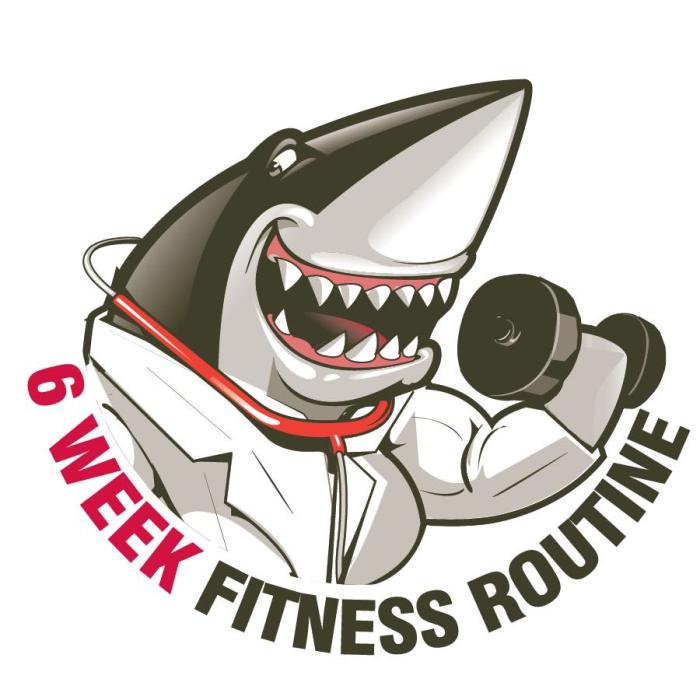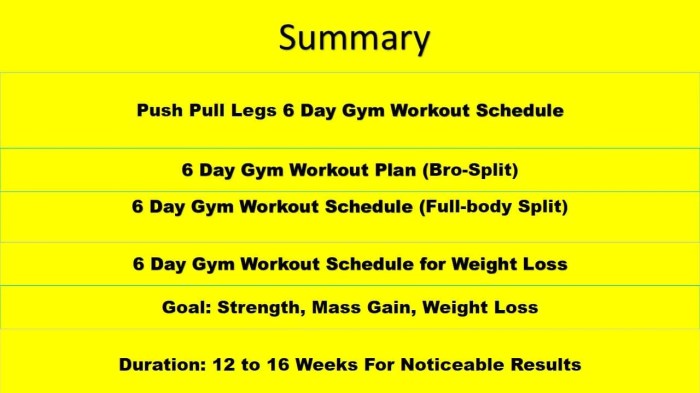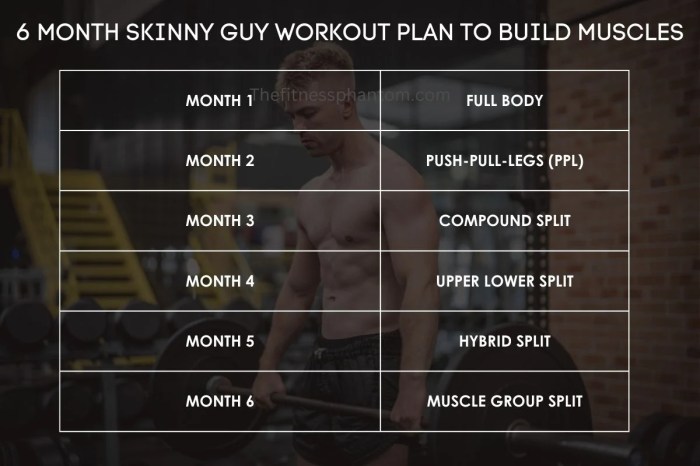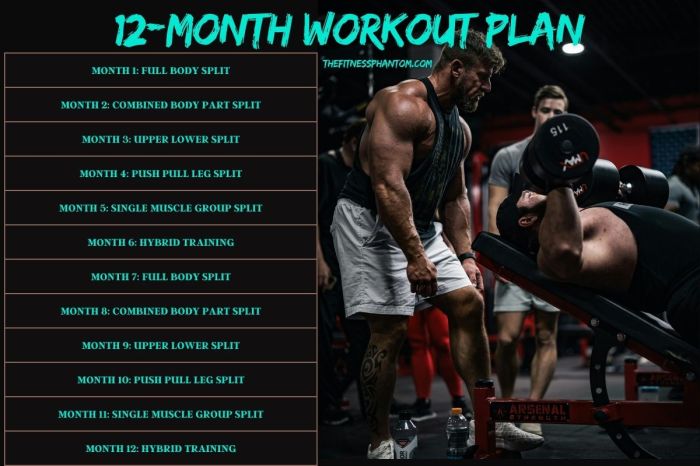Embark on a journey to craft a successful 6-month fitness plan and stay committed with expert tips and strategies. Dive into the world of fitness goal setting, workout scheduling, and nutrition planning for a transformative experience.
Uncover the secrets to achieving your fitness aspirations and maintaining consistency for lasting results.
Setting Fitness Goals

Setting specific fitness goals is crucial when creating a 6-month fitness plan. These goals provide direction, motivation, and a clear roadmap for progress. It is essential to set realistic and achievable goals to prevent frustration and maintain consistency in your fitness journey.
Importance of Setting Realistic and Achievable Goals
Setting realistic and achievable goals ensures that you stay motivated throughout your fitness plan. Unrealistic goals can lead to burnout and demotivation. By setting achievable goals, you are more likely to stay on track and celebrate your progress along the way.
Examples of Short-term and Long-term Fitness Goals
- Short-term Goal: To lose 5 pounds in the first month by following a balanced diet and regular exercise routine.
- Long-term Goal: To run a half-marathon in 6 months by gradually increasing running distance and improving endurance.
Tips on How to Measure Progress Towards These Goals
- Track your workouts and progress in a fitness journal or app to monitor improvements over time.
- Take regular measurements of your body composition, such as weight, body fat percentage, and muscle mass.
- Set specific milestones to assess your progress towards each goal and make adjustments to your plan as needed.
Creating a Workout Schedule

To achieve your fitness goals effectively, it’s essential to design a weekly workout schedule that includes a variety of exercises. This schedule should incorporate cardio, strength training, and flexibility exercises to ensure a well-rounded approach to fitness.
The Significance of Incorporating Different Types of Exercises
- Cardio exercises help improve cardiovascular health, burn calories, and boost endurance.
- Strength training exercises build muscle, increase metabolism, and enhance overall strength.
- Flexibility exercises improve range of motion, reduce the risk of injuries, and promote better posture.
How to Balance Workouts Throughout the Week
- Include a mix of cardio, strength training, and flexibility exercises in your weekly schedule.
- Alternate between different types of workouts to prevent plateaus and keep your body challenged.
- Consider your fitness goals and adjust the intensity and duration of each workout accordingly.
Adjusting the Workout Plan Based on Progress
- Track your progress regularly to assess if you’re meeting your fitness goals.
- If you’re not seeing results, consider increasing the intensity or duration of your workouts.
- Listen to your body and make adjustments as needed to avoid overtraining or burnout.
Nutrition Planning

Proper nutrition is essential to support your fitness goals and overall well-being. Fueling your body with the right balance of macronutrients and micronutrients can help improve your performance, aid in muscle recovery, and boost your energy levels.
Balanced Meal Plan
Creating a balanced meal plan is key to ensuring you are getting the necessary nutrients to support your fitness journey. Include a variety of foods from all food groups, such as lean proteins, whole grains, fruits, vegetables, and healthy fats.
Macronutrients and Micronutrients
Macronutrients, including carbohydrates, proteins, and fats, provide energy and support various bodily functions. Micronutrients, such as vitamins and minerals, are essential for overall health and well-being. Make sure to include a good mix of both in your diet.
Meal Prepping and Healthy Snacking
Meal prepping can help you stay on track with your nutrition goals by having healthy meals readily available. Prepare your meals in advance and portion them out for easy grab-and-go options. When it comes to snacking, opt for nutrient-dense options like fruits, nuts, or Greek yogurt.
Staying Hydrated and Resting
Hydration is crucial for proper bodily function and exercise performance. Make sure to drink an adequate amount of water throughout the day, especially before, during, and after your workouts. Additionally, getting enough rest and allowing your body to recover is just as important as exercise. Aim for quality sleep and listen to your body’s signals for rest and recovery.
Summary

In conclusion, mastering the art of creating and sticking to a 6-month fitness plan is within reach with dedication and proper guidance. Take charge of your health and fitness journey today for a brighter, healthier tomorrow.